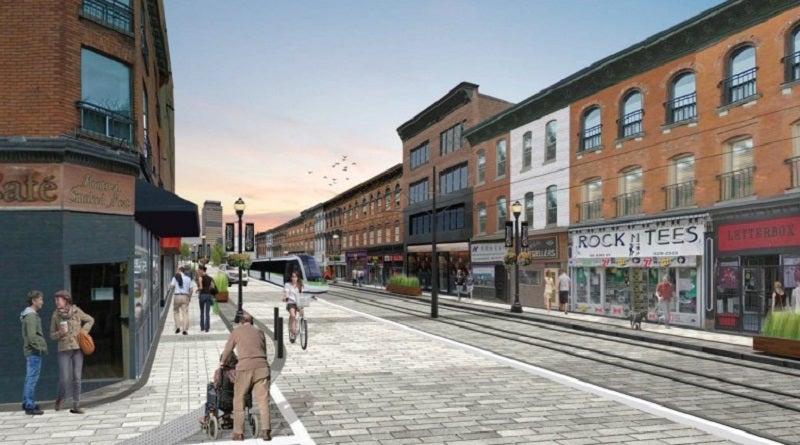
Hamilton City Council in Canada has given the green light to a memorandum of understanding (MoU) with the Ministry of Transportation (MTO) and Metrolinx to move ahead with the 14km Hamilton Light Rail Transit (LRT) project.
Metrolinx and the City of Hamilton will now create a project team and jointly progress into the procurement and implementation phases of the project.

Discover B2B Marketing That Performs
Combine business intelligence and editorial excellence to reach engaged professionals across 36 leading media platforms.
The Hamilton LRT project will link Eastgate in the east to McMaster University in the west.
This 17-stop LRT line will also integrate with Hamilton Street Railway (HSR) bus service, and connect with local bike share, GO bus and rail service.
The new light rail vehicles, which are expected to provide a frequent and secure service, will operate along tracks separated from regular traffic.
As part of the project, investments will be made in public infrastructure, including roads, sidewalks, bridges, electrical distribution (hydro), telecommunications, natural gas, streetlights, and traffic control signals.

US Tariffs are shifting - will you react or anticipate?
Don’t let policy changes catch you off guard. Stay proactive with real-time data and expert analysis.
By GlobalDataAdditionally, together with the Hamilton Community Benefits Network, a community benefits framework will be established for providing job opportunities for local suppliers, apprenticeships, and contractors.
Hamilton Chamber of Commerce president and CEO Keanin Loomis said: “The B-Line LRT will be the spine of Hamilton’s future transit system, improving local transit options and modalities, and reducing congestion.
“Moreover, the transformative potential of this major infrastructure investment will provide 7,000 jobs for Hamilton and neighbouring municipalities, that will in turn boost our post-pandemic economic recovery.”
Initial construction work on the project is expected to commence in early 2022, with the continuation of demolitions of vacant properties on the corridor this winter.
In May, a joint funding announcement was made by the provincial and federal governments to invest $3.4bn to the project’s capital cost.



